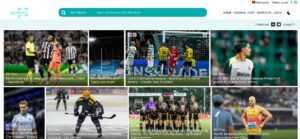In digital content management, two tools emerge as essential solutions: DAM (Digital Asset Management) and CMS (Content Management System). While both are crucial for companies looking to optimize the management of their digital assets, there is often confusion about what they are and which solution is best suited for different business needs. In this article, we will explore the differences between DAM and CMS, their benefits, and help you understand which of the two systems might be the best fit for your company.
What is a DAM (Digital Asset Management)?
The Digital Asset Management (DAM) system is a platform designed to manage, organize, and distribute digital files such as images, videos, documents, and audio. Its main goal is to centralize all of a company’s multimedia content, making it easily accessible and usable by various teams or stakeholders.
Benefits of DAM:
-
- Advanced organization: Digital files can be tagged with metadata, categorized, and sorted for more efficient management.
- Centralized Access: All files are stored on a single platform, simplifying the distribution of digital assets across various channels and teams.
- Automation and Tracking: Version tracking and permissions help prevent unauthorized or redundant usage.
- Support for High-Quality Content: DAM is optimized for managing large files, such as high-resolution videos, and offers automatic format conversion tools.
A DAM is particularly useful for companies that manage a large volume of multimedia files, such as marketing agencies, global brands, or industries like e-commerce and media, where consistency and rapid asset distribution are crucial.
What is a CMS (Content Management System)?
A Content Management System (CMS) is a tool used to create, manage, and publish digital content on a website or digital platform. CMS platforms are primarily focused on managing web pages, text, and editorial content.
Benefits of a CMS:
- Ease of Publication: Allows content to be published and edited without advanced technical skills.
- Site Management Tools: Simplifies the management of web pages, blogs, articles, and dynamic content.
- Integration with Web Design: Many CMS platforms offer ready-made themes and templates, enabling businesses to create attractive and functional websites.
- Multi-User Management: A CMS allows multiple users to contribute to and collaborate on content creation.
Typically, CMS platforms are used by companies that want to maintain and regularly update their websites with editorial content, such as blogs, news, or product pages. Common examples of CMS platforms include WordPress, Joomla, and Drupal.
DAM vs. CMS: Key Differences
1. Type of Content Managed:
- DAM is specialized in managing multimedia assets (images, videos, audio, etc.).
- CMS is designed primarily to manage textual content and web pages, though it can also include multimedia elements.
2. Purpose:
- DAM focuses on the storage, organization, and distribution of digital files across the company, with a strong emphasis on asset protection and reuse.
- CMS centers on creating and publishing content on websites and digital platforms, optimizing online consumption.
3. Version Management:
- DAM often provides advanced version tracking features for each asset, ensuring that all stakeholders can access the latest approved version.
- CMS may have revision tools but is less sophisticated when it comes to managing specific multimedia files.
4. Collaboration and Access:
- DAM allows teams distributed globally to access multimedia assets, enhancing collaboration across departments and regions.
- CMS focuses on editorial content collaboration, often with multiple authors and editors working on the same website or blog.
When to Choose a DAM, a CMS, or Both?
Choose a DAM if:
- Your company manages a large volume of digital files.
- You need a system that facilitates centralized and distributed access to digital assets.
- You work with high-resolution or large multimedia files and want to manage them efficiently.
Choose a CMS if:
- Your primary goal is the management and publication of web content, such as articles, product pages, or blogs.
- You want to simplify website updates without the direct involvement of developers.
- You are looking for a platform to manage and organize online content.
Choose both if:
- You need to regularly publish content online while also managing a wide range of multimedia files.
- Your company is divided between managing a complex website and the need to coordinate multimedia assets across various channels.
Conclusion
The choice between a DAM and a CMS depends on your company’s specific needs. If you mainly manage multimedia content and want a system that simplifies their organization and distribution, a DAM is the ideal solution. If, instead, your goal is large-scale web content publication, a CMS will be more suitable. For many companies, integrating both solutions could be the perfect compromise, offering the best of both technologies to efficiently manage digital content.
MomaPIX has recently integrated a CMS, accessible from the same backend as its DAM, making digital and multimedia content management even simpler and more centralized. With this all-in-one solution, you can manage your website and multimedia assets in one place, enhancing your company’s productivity and efficiency.
Visit www.momapix.com to learn more and discover how we can help you improve your digital asset management and content management strategy.




